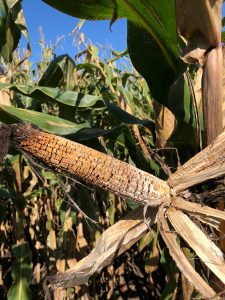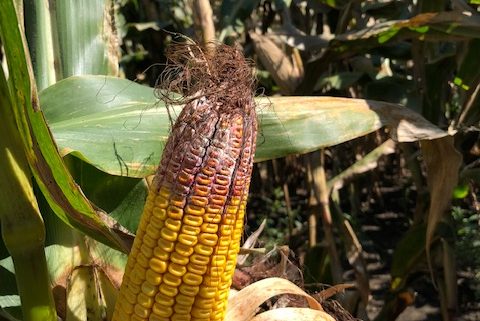New Research Update: Disease Development and Deoxynivalenol Accumulation in Silage Corn
Richard W. Webster, University of Wisconsin-Madison; Maxwell O. Chibuogwu, University of Wisconsin-Madison; Hannah Reed, University of Wisconsin-Madison; Brian Mueller, University of Wisconsin-Madison; Carol L. Groves, University of Wisconsin-Madison; Albert U. Tenuta, Ontario Ministry of Agriculture, Food and Rural Affairs; Martin I. Chilvers, Michigan State University; Kiersten A. Wise, University of Kentucky; and Damon Smith, University of Wisconsin-Madison.
A new research update has just been published on the Crop Protection Network summarizing recent work conducted to understand how deoxynivalonol (DON or vomitoxin) accumulates in silage corn plants. We also took a look at managing this issue with fungicides. The summary of the work is below, or you can click here to read the entire research update.

Gibberella ear rot
Summary
- Fusarium graminearum is a fungus that causes the two diseases, Gibberella ear rot and Gibberella stalk rot, which can lower yield and feed quality of silage corn.
- This fungus produces a secondary metabolite called deoxynivalenol (DON; also known as vomitoxin) during development and colonization of the corn plant, which is toxic to both humans and livestock.
- Our research found that infection, colonization, and production of DON by F. graminearum in ears and stalks of corn plants can differ, and suggests that the two diseases can occur independently of each other.
- Foliar fungicides reduced foliar diseases in both years, but the effects of fungicide on DON concentrations across entire plants were inconsistent in 2019.
- Scouting for Gibberella ear and stalk rot and testing for DON in silage corn is important even if visual ear symptoms are not present as DON may still be accumulating in the stalks.





